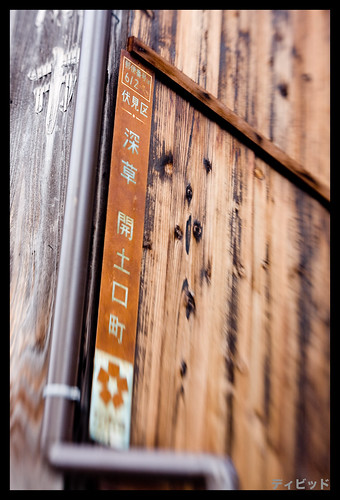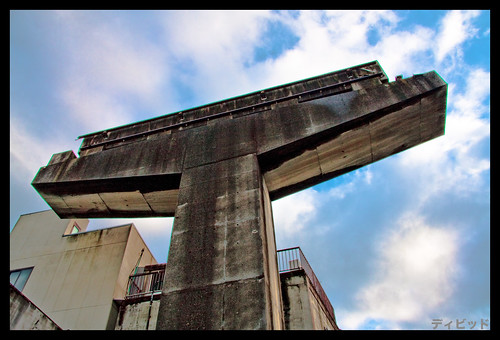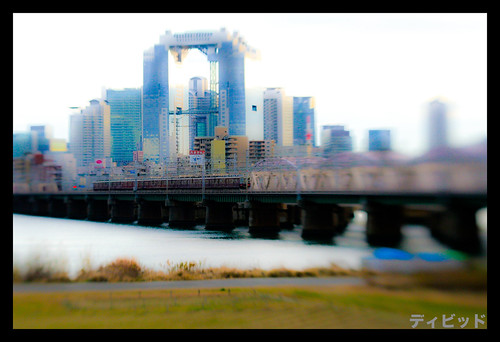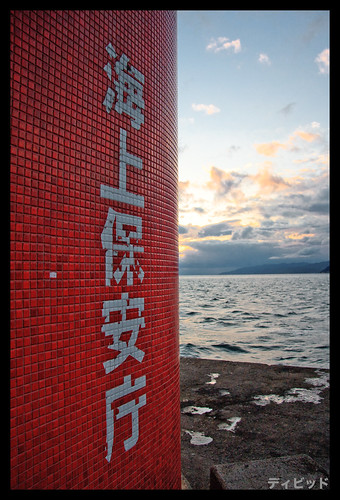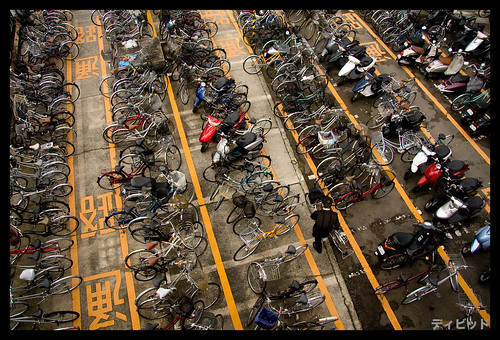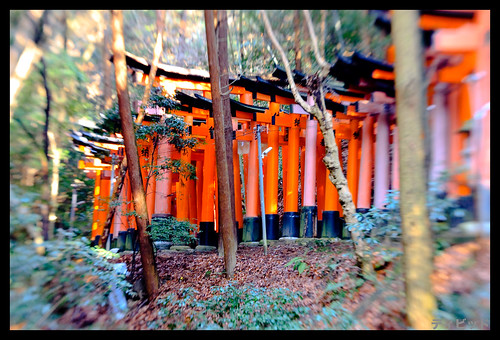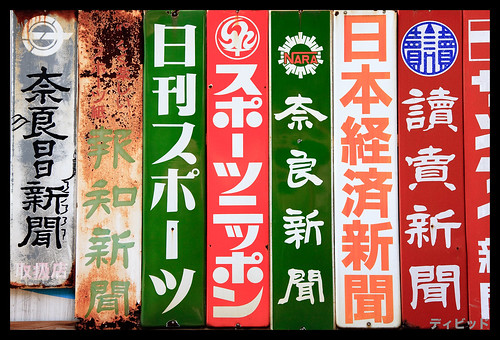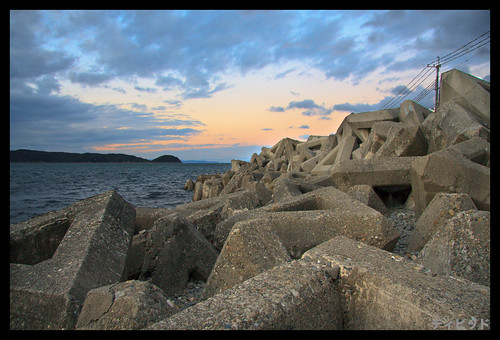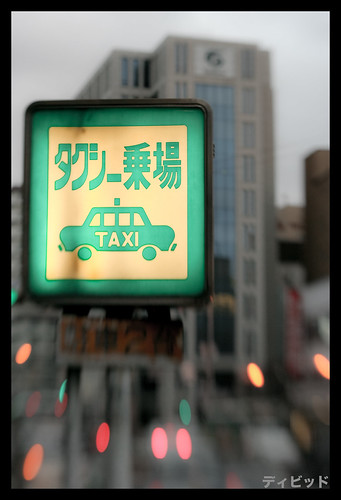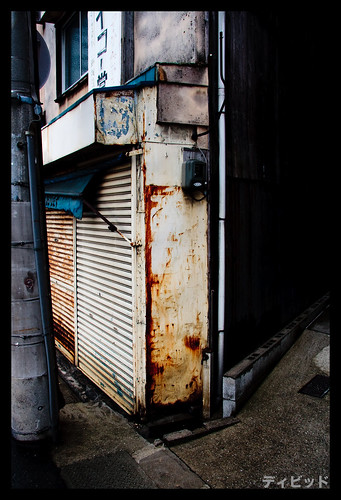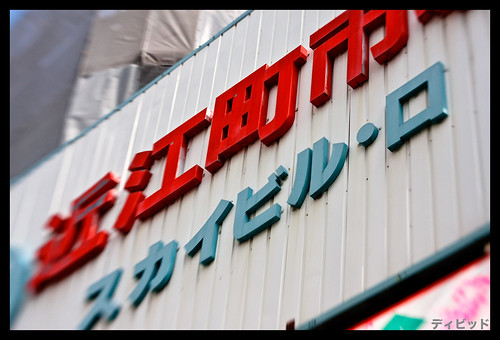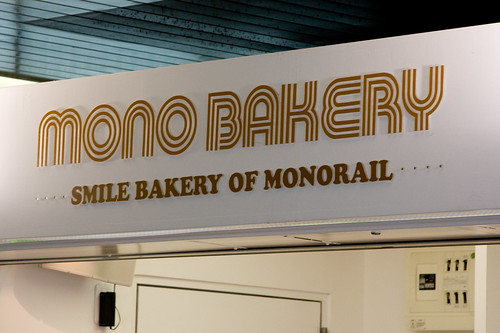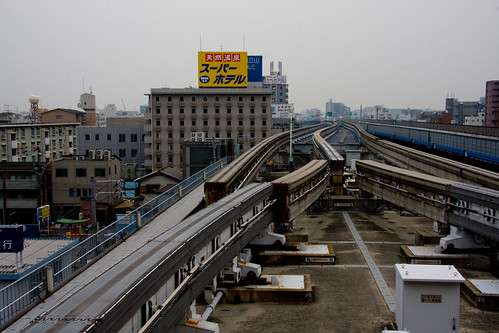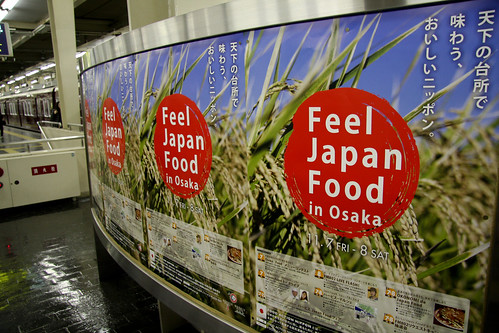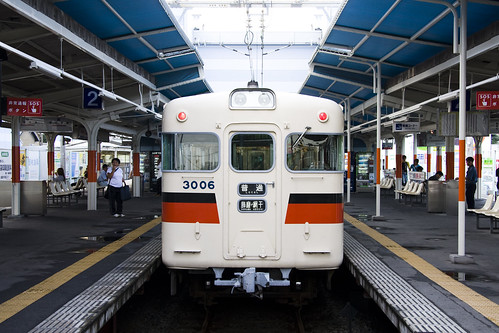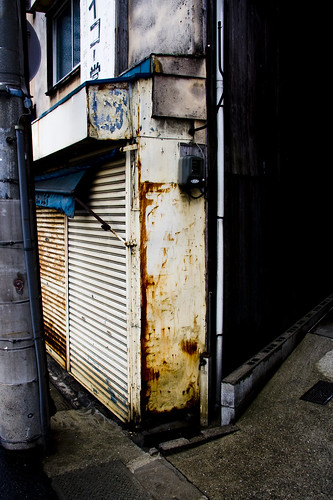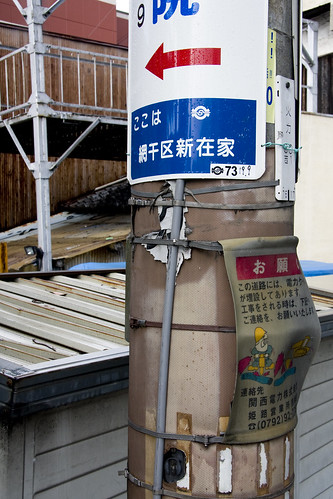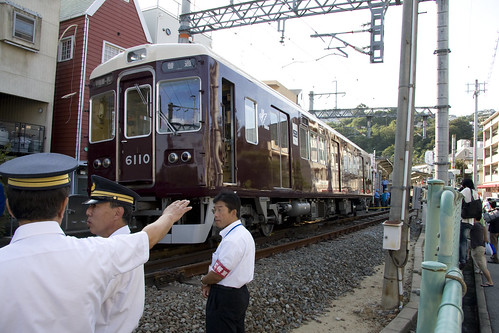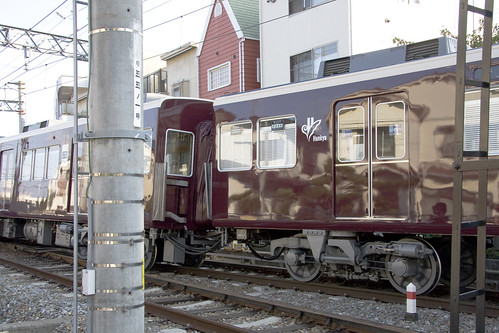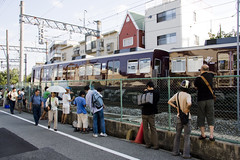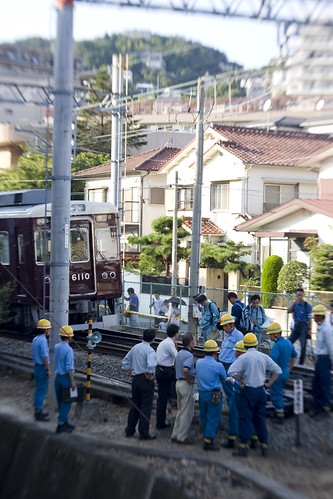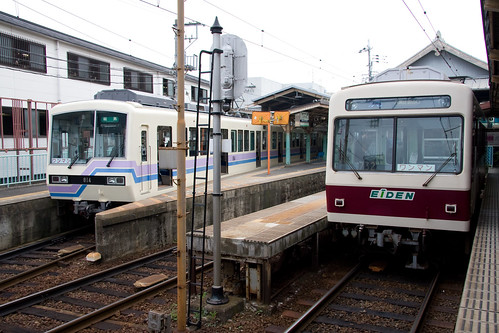 Eiden Demachiyanagi station
Eiden Demachiyanagi stationThe Kansai 3 Day ticket is a great bargain if you enjoy trains or want to explore parts of Kansai you'd never get to othewise. It allows 3 days of unlimited travel on most private railways and buses in the Kansai area. Tourists coming from abroad can buy the ticket anytime, (
English homepage) but residents of Japan can buy and use the ticket only during certin times of the year from most major train stations in Kansai for ¥5000. (
Japanese homepage) It's currently the fall period for the pass (11/1~12/7) and I picked one up. I've got a silly goal of riding all the private train lines in the Surutto network and taking this beautiful to Mount Hiei route I got a few of those lines finished. The pass covered all of the trains except for the Eizan cable car and rope way which cost ¥840 one way.
I started my trip by taking the Keihan main line to it's terminus at Demachiyanagi (出町柳) station. From there I changed to the
Eiden (叡電) main line. Although now wholly owned by Keihan, Eiden keeps it's own idenity. Eiden is a small local line that operates on the street, much like the Hankai line in Osaka and Sakai. You pay when you exit the cars, but some of the larger stations also have turnstiles.
 Very Berry Cafe
Very Berry Cafe I had lunch at the
Very Berry Cafe that was featured in Surutto Kansai's free magazine. The decor was Hawaiian/Americana and the sandwich was great. I've marked the location on the map at the top of this post. It's a 5 minute walk from Ichijoji station.
 My sandwich
My sandwich A looking down the Eiden lines
A looking down the Eiden lines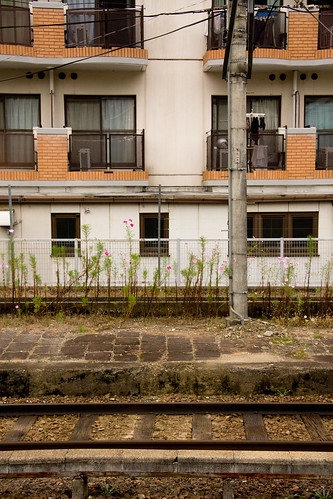 Takaragiike station
Takaragiike station Yase-Hieizanguchi station
Yase-Hieizanguchi station The river between the train and cable car stations.
The river between the train and cable car stations.At Yase-Hieizan-guchi I changed to the Eizan Cable and Ropeway. (
Japanese Homepage) The cable car takes you 561 meters / 1,841 feet up the side of Mount Hiei. The greatest vertical interval of any cable car in Japan.
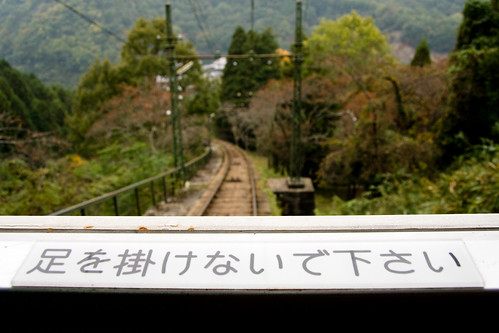 Don't hang your feet (out the window) please
Don't hang your feet (out the window) please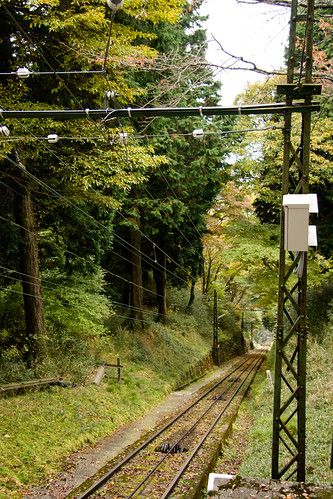 The view looking down
The view looking downBetween the cable and the ropeway stations on the side of the mountain there is an abandoned ropeway car along the hiking path adding to the mountain's atmosphere of age and wonder. Also adding a bit of fear. I like seeing things from ropeways, but I always imagine the rope breaking and the car falling to the ground. Thankfully there was charm for the ropeways safe operation in the car.
 The abandoned ropeway car
The abandoned ropeway car The charm
The charm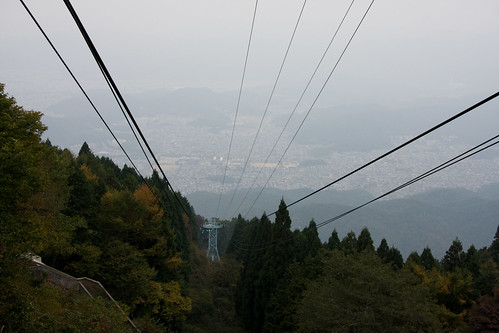 A cloudy view of northern Kyoto from the ropeway
A cloudy view of northern Kyoto from the ropewayAt the top of the mountain there is a garden, a bus stop and view of lake Biwa and Otsu city that was blocked by the cloudy weather.
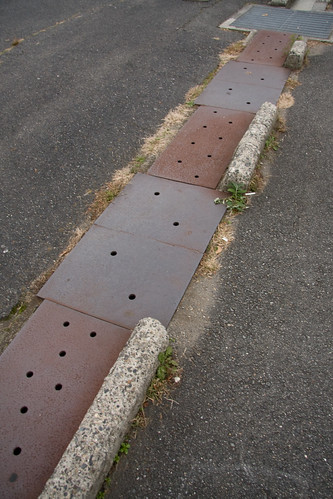 Some rusted drain covers
Some rusted drain covers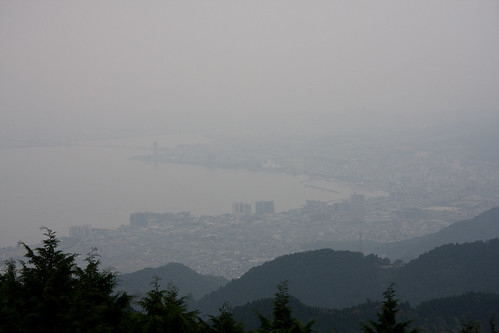 A cloudy view of Otsu city
A cloudy view of Otsu cityI took the bus 5 minutes across the mountain to the entrance to
Enrakuji and the Sakamoto cable car.
Enrakuji was once one home to one of the most powerful Buddhist sects in Japan through influence and proximity to the emperor until their temple and monk army was destroyed by Oda Nobunaga in 1571. The temple and mount Hiei were also mentioned in the
Tale of Genji. Enrakuji's home page also offers
"virtual driving".


 Concrete and Nature between Enrakuji and the Sakamoto cable car station
Concrete and Nature between Enrakuji and the Sakamoto cable car station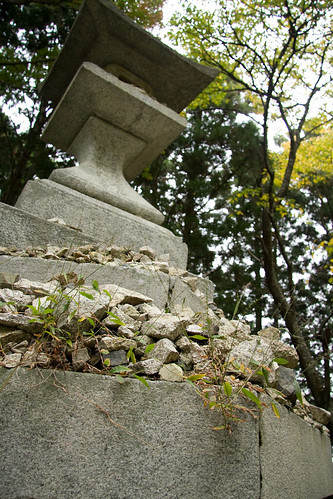 This lantern has been covered with small stones for reasons unknown to me
This lantern has been covered with small stones for reasons unknown to meThe Sakamoto Cable, built in 1927, is the longest cable car route in Japan and the station at the top of the hill looks like it hasn't changed since it was built. It's yellow brick and interior accents make this one of the most beautiful buildings I've seen in Japan. The ride takes you through some dense forest, past a waterfall and through a tunnel along it's route. Highly recommended, and covered under Kansai 3 day ticket.
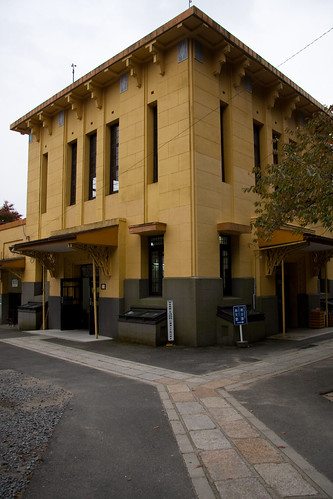 The Sakamoto cable car station
The Sakamoto cable car stationFrom the base station of the Sakamoto it's a nice 10-15 minute walk to the Keihan Sakamoto station where I took Keihan back to Kyoto, changing trains at Hamaotsu station.
Without taking breaks for looking at the temples and not including getting to the Kyoto area from my home in Nishinomiya, I was able to complete the route in about 5 hours, but to really enjoy everything a full day would be required.
